
INTERNATIONAL JOURNAL OF MODERN PHYSICS A
Scope & Guideline
Elevating research standards in contemporary physics.
Introduction
Aims and Scopes
- Quantum Field Theory:
Research exploring the principles and applications of quantum field theories, including perturbative and non-perturbative methods, anomalies, and effective field theories. - Cosmology and General Relativity:
Studies addressing the dynamics of the universe, including inflationary models, dark energy, and gravitational wave phenomena, often through modified theories of gravity. - Particle Physics:
Investigations into the fundamental constituents of matter and their interactions, including studies on mesons, quarks, and lepton flavor physics. - String Theory and Higher Dimensions:
Research into string theory, including its implications for particle physics and cosmology, as well as studies of higher-dimensional gravitational theories. - Mathematical Physics and Computational Techniques:
Papers that delve into the mathematical underpinnings of physical theories, including the use of computational methods and machine learning in theoretical investigations. - Quantum Gravity:
Explorations of theories unifying quantum mechanics and general relativity, including loop quantum gravity and other approaches to understanding gravity at quantum scales. - Thermal and Statistical Physics:
Research on phase transitions, thermal dynamics in cosmological contexts, and statistical mechanics applications to high-energy particle collisions. - Topological and Nonlinear Phenomena:
Studies focusing on topological aspects of physical systems, including solitons, vortex dynamics, and emergent phenomena in condensed matter and field theories.
Trending and Emerging
- Quantum Computing and Information:
An emerging theme in the journal is the exploration of quantum computing applications in physics, including quantum algorithms and their implications for solving complex problems. - Dark Matter and Dark Energy Models:
There is a growing trend towards innovative models and theories addressing dark matter and dark energy, reflecting an urgent need to understand these phenomena in cosmology. - Neutrino Physics and Flavor Dynamics:
Research on neutrino masses, mixing angles, and flavor symmetries is increasingly prominent, driven by new experimental results and theoretical developments in particle physics. - Machine Learning Applications in Physics:
The integration of machine learning techniques in both theoretical predictions and experimental data analysis is gaining traction, indicating a shift towards computational approaches in physics research. - Quantum Gravity and Black Hole Thermodynamics:
Increasingly, papers are focusing on the implications of quantum gravity on black hole thermodynamics, particularly in connection with entropy and information paradoxes. - Higher-Dimensional Theories and Extra Dimensions:
Research exploring the implications of theories with extra dimensions, including string theory and brane-world scenarios, is on the rise, reflecting ongoing interest in unifying gravity with quantum mechanics. - Topology in Quantum Field Theories:
There is a notable increase in studies examining the role of topology in quantum field theories, including applications to condensed matter and high-energy physics.
Declining or Waning
- Classical Field Theories:
Research related to classical field theories, such as classical electromagnetism or Newtonian physics, has been decreasing, as the focus shifts towards more complex quantum and relativistic frameworks. - Phenomenological Models:
Papers that primarily focus on phenomenological aspects without strong theoretical underpinnings have seen a decline, as there is a growing emphasis on rigorous theoretical models and predictions. - Applications of Non-Standard Models:
Studies based on non-standard models of physics that lack experimental validation or theoretical support have become less frequent, indicating a preference for more mainstream theories. - Basic Experimental Techniques:
Discussions centered on traditional experimental techniques in particle physics are waning, as the community increasingly focuses on novel methodologies and technologies.
Similar Journals
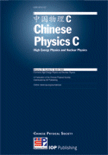
Chinese Physics C
Advancing the Frontiers of Physics ResearchChinese Physics C is a premier, peer-reviewed journal published by IOP Publishing Ltd, dedicated to advancing knowledge in the fields of Astronomy and Astrophysics, Instrumentation, and Nuclear and High Energy Physics. With an impressive impact factor reflecting its standing in the Q1 quartile across multiple categories, this journal serves as a vital resource for researchers, professionals, and students seeking to engage with cutting-edge developments and experimental findings. Since its inception in 2008, Chinese Physics C has fostered significant collaborations and discussions within the global physics community, enabling easy access to high-quality research through its open access options. Operating from the United Kingdom with a commitment to excellence, this journal not only showcases high-impact papers but also encourages innovative methodologies and interdisciplinary approaches, solidifying its role as an essential platform for dissemination and dialogue in the rapidly evolving landscape of physics.
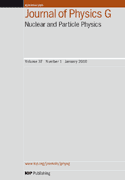
JOURNAL OF PHYSICS G-NUCLEAR AND PARTICLE PHYSICS
Connecting Researchers to the Pulse of Particle PhysicsJOURNAL OF PHYSICS G-NUCLEAR AND PARTICLE PHYSICS, published by IOP Publishing Ltd, stands as a premier journal in the realm of Nuclear and High Energy Physics. With an established presence since 1989 and currently converging toward 2024, this influential journal emphasizes groundbreaking research and discoveries in particle physics, fostering the dissemination of knowledge among a global audience of researchers, professionals, and students. Recognized for its high-quality publications, it holds a Q1 ranking in its category for 2023, placing it at an impressive 87th percentile among 87 journals in its field as per Scopus Rankings. The journal's impact is reflected in its esteemed reputation, making it an essential resource for advancing the frontiers of physics. Although it currently does not operate under an open access model, the journal ensures that subscribers receive comprehensive insights into the latest developments and theoretical advances that shape our understanding of the universe.
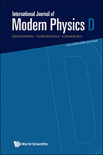
INTERNATIONAL JOURNAL OF MODERN PHYSICS D
Elevating Research Standards in Modern PhysicsWelcome to the INTERNATIONAL JOURNAL OF MODERN PHYSICS D, a premier publication dedicated to the advancement of knowledge in the fields of Astronomy and Astrophysics, Mathematical Physics, and Space and Planetary Science. Published by WORLD SCIENTIFIC PUBL CO PTE LTD in Singapore, the journal boasts an impressive impact, being ranked Q2 in Astronomy and Astrophysics and Mathematical Physics, and Q3 in Space and Planetary Science. With a converged publishing timeline from 1996 to 2024, this journal provides a vital platform for researchers and professionals to disseminate their findings, engage with cutting-edge research, and explore emerging ideas in modern physics. Although it operates under a traditional access model, the rigorous peer-reviewed process ensures that only the highest quality research contributes to the collective understanding of our universe. Join us in advancing the frontiers of physics and astronomy!
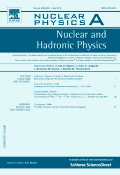
NUCLEAR PHYSICS A
Driving Progress in High Energy Physics ResearchNUCLEAR PHYSICS A, published by Elsevier, is a leading international journal dedicated to the fields of Nuclear and High Energy Physics. With an ISSN of 0375-9474 and E-ISSN 1873-1554, the journal has been pivotal in advancing research since its inception in 1967 and is set to continue influencing the discipline through 2025. It holds a commendable Q2 classification in the 2023 category of Nuclear and High Energy Physics, ranking 32nd out of 87 journals in its field according to Scopus, placing it in the 63rd percentile. NUCLEAR PHYSICS A provides valuable insights and disseminates cutting-edge research, aiding researchers, professionals, and students in their academic and practical pursuits. Though it does not currently offer open access, the journal remains a vital resource for those engaged in the exploration of nuclear phenomena and theoretical advancements in high-energy physics.

EUROPEAN PHYSICAL JOURNAL C
Pioneering Open Access to Groundbreaking FindingsEUROPEAN PHYSICAL JOURNAL C (EPJ C), published by SPRINGER, stands as a premier platform for innovative research in the domains of Physics and Engineering. With its Open Access policy established in 2014, EPJ C ensures that groundbreaking findings are readily available to the global scientific community, enhancing accessibility and collaboration. The journal, indexed in prestigious databases, boasts an impressive impact factor and ranks within the Q1 category for both Engineering and Physics and Astronomy, placing it among the top-tier journals in these fields. Celebrated for its rigorous peer-review process, EPJ C offers a wide-ranging scope encompassing various topics in particle physics, quantum field theory, and related interdisciplinary studies. Its consistent publication since 1991 has fostered a vibrant community of researchers dedicated to advancing knowledge and innovation in physics and engineering. Join the scholarly discussion and contribute to the cutting-edge research made possible through EPJ C's esteemed platform.

ANNALES HENRI POINCARE
Advancing the Frontiers of Theoretical and Applied PhysicsANNALES HENRI POINCARE is a prestigious journal published by Springer International Publishing AG, dedicated to advancing research in the fields of Mathematical Physics, Nuclear and High Energy Physics, and Statistical and Nonlinear Physics. With an impressive Q1 ranking in its respective categories as of 2023, this journal is recognized as a vital resource for academic researchers, professionals, and students engaged in frontier studies of theoretical and applied physics. The journal's commitment to high-quality peer-reviewed articles promotes significant contributions to the understanding of complex physical phenomena, making it essential reading for anyone seeking to stay abreast of developments in these dynamic fields. Additionally, ANNALES HENRI POINCARE offers open access options to enhance the visibility and accessibility of groundbreaking research, underscoring its role in fostering collaborative scientific inquiry and innovation. Since its inception in 2000, it has continually provided a platform for scholars worldwide to disseminate their findings and engage with the broader scientific community, thus establishing itself as a cornerstone of academic literature.
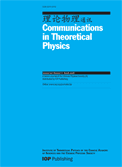
COMMUNICATIONS IN THEORETICAL PHYSICS
Elevating theoretical discourse to new heights.COMMUNICATIONS IN THEORETICAL PHYSICS is a distinguished journal published by IOP Publishing Ltd, focusing on the broad and evolving field of theoretical physics. With an ISSN of 0253-6102 and an E-ISSN of 1572-9494, this journal provides a platform for the dissemination of innovative research that contributes to the understanding of complex physical concepts. Situated in the United Kingdom, it has established itself as a pivotal resource from 1996 to 2024, achieving a commendable Q2 ranking in the category of Physics and Astronomy (miscellaneous) for 2023. With a Scopus ranking of #18 out of 81 in its category, demonstrating a 78th percentile, this journal plays a crucial role in enhancing scholarly communication among researchers, professionals, and students alike. Although it does not currently offer Open Access options, the journal's comprehensive scope and commitment to high-quality peer-reviewed research underline its significance in the scientific community, making it an essential reading for anyone engaged in theoretical physics.
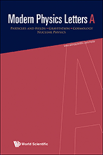
MODERN PHYSICS LETTERS A
Bridging Theories and Discoveries in PhysicsMODERN PHYSICS LETTERS A, published by World Scientific Publishing Co Pte Ltd, is a distinguished journal in the field of physics that serves as a pivotal platform for researchers, professionals, and students alike. With ISSN 0217-7323 and E-ISSN 1793-6632, the journal has gained international acclaim for its contributions to Astronomy and Astrophysics as well as Nuclear and High Energy Physics. The journal is ranked in Q3 for both Astronomy and Astrophysics and Nuclear and High Energy Physics, showcasing its relevance in these areas, while also achieving a Q2 ranking in the broader category of Physics and Astronomy (miscellaneous). Spanning from 1996 to 2024, MODERN PHYSICS LETTERS A promotes open dialogue and dissemination of pioneering research findings and innovative theories. While the journal operates without an open access option, its rich content is easily accessible through various academic databases, ensuring that vital research is shared widely among the scientific community. Situated in Singapore, this journal plays an essential role in the continuous advancement of the physics discipline, fostering collaboration and knowledge sharing among global researchers.

PRAMANA-JOURNAL OF PHYSICS
Fostering Innovation in the Study of the CosmosPRAMANA-JOURNAL OF PHYSICS, published by the esteemed Indian Academy of Sciences, serves as a pivotal platform for disseminating high-quality research in the field of Physics and Astronomy. Established in 1973, this journal aims to promote significant findings in various branches of physics, encapsulating both theoretical and experimental research. With a solid reputation reflected in its Q2 ranking in the Physics and Astronomy (miscellaneous) category and a commendable 94/243 rank in the Scopus database, PRAMANA stands at the forefront of the academic community. Researchers, professionals, and students benefit from its accessible compilation of innovative studies, contributing richly to the scholarly discourse. The journal, operating from its base in Bangalore, India, is committed to advancing knowledge through rigorous peer-reviewed articles, ensuring that all contributions hold merit in expanding our understanding of the physical world.
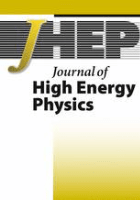
JOURNAL OF HIGH ENERGY PHYSICS
Pioneering peer-reviewed research for a global scientific community.JOURNAL OF HIGH ENERGY PHYSICS, published by SPRINGER, stands at the forefront of research in the fields of nuclear and high energy physics. With an impressive impact factor and a Scopus ranking of #5 out of 87 in its category, it sits comfortably in the 94th percentile of academic journals worldwide. Since its inception in 1997 and transitioning to Open Access in 2014, the journal has committed itself to the dissemination of peer-reviewed, cutting-edge research that fosters collaboration and innovation across the global scientific community. Located in Germany and reaching audiences worldwide, the journal aims to provide a platform for scholars and researchers to share their findings, thus propelling advancements in theoretical and experimental physics. As it converges into 2024, the JOURNAL OF HIGH ENERGY PHYSICS continues to be an essential resource for anyone engaged in this dynamic field of study.